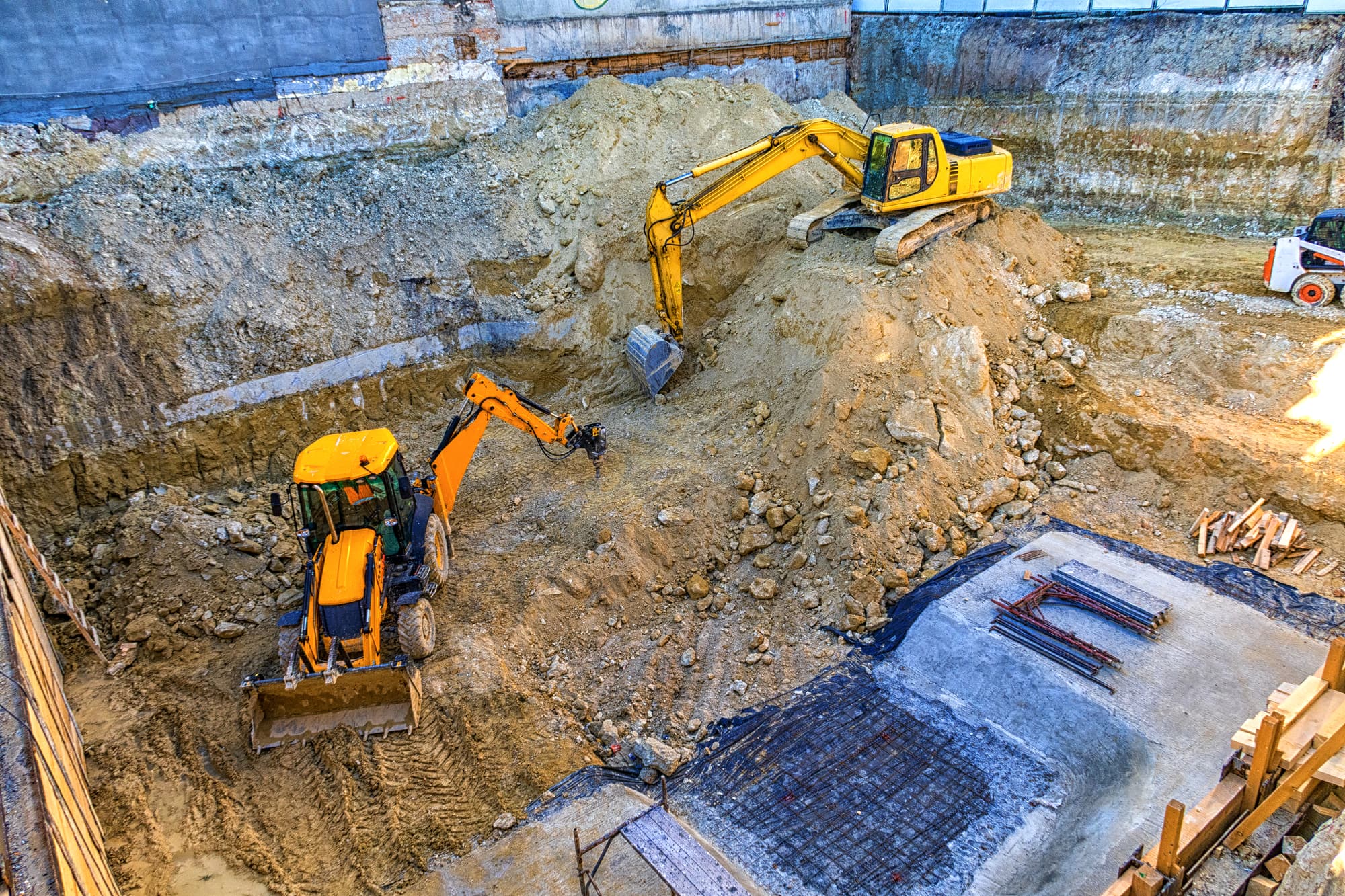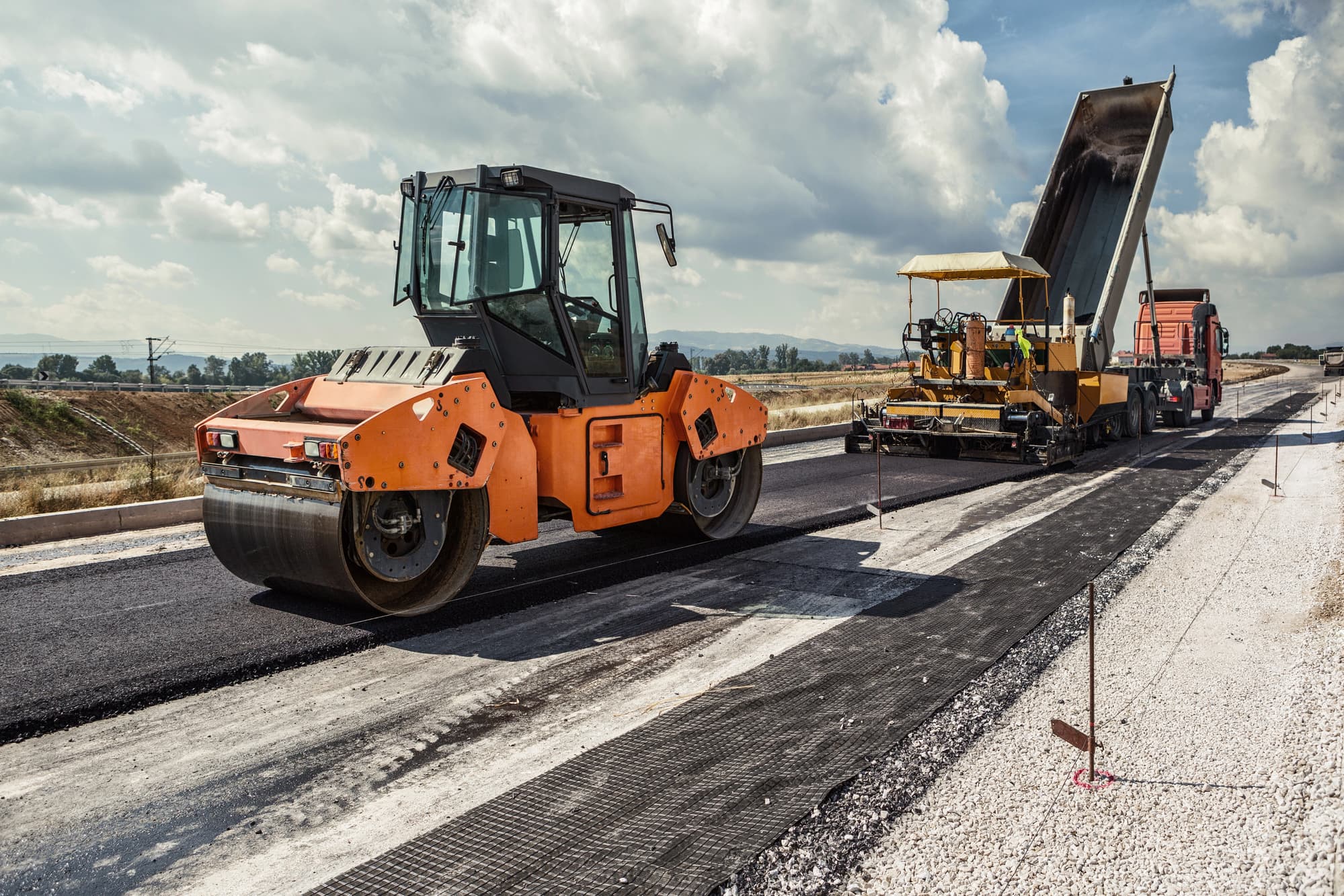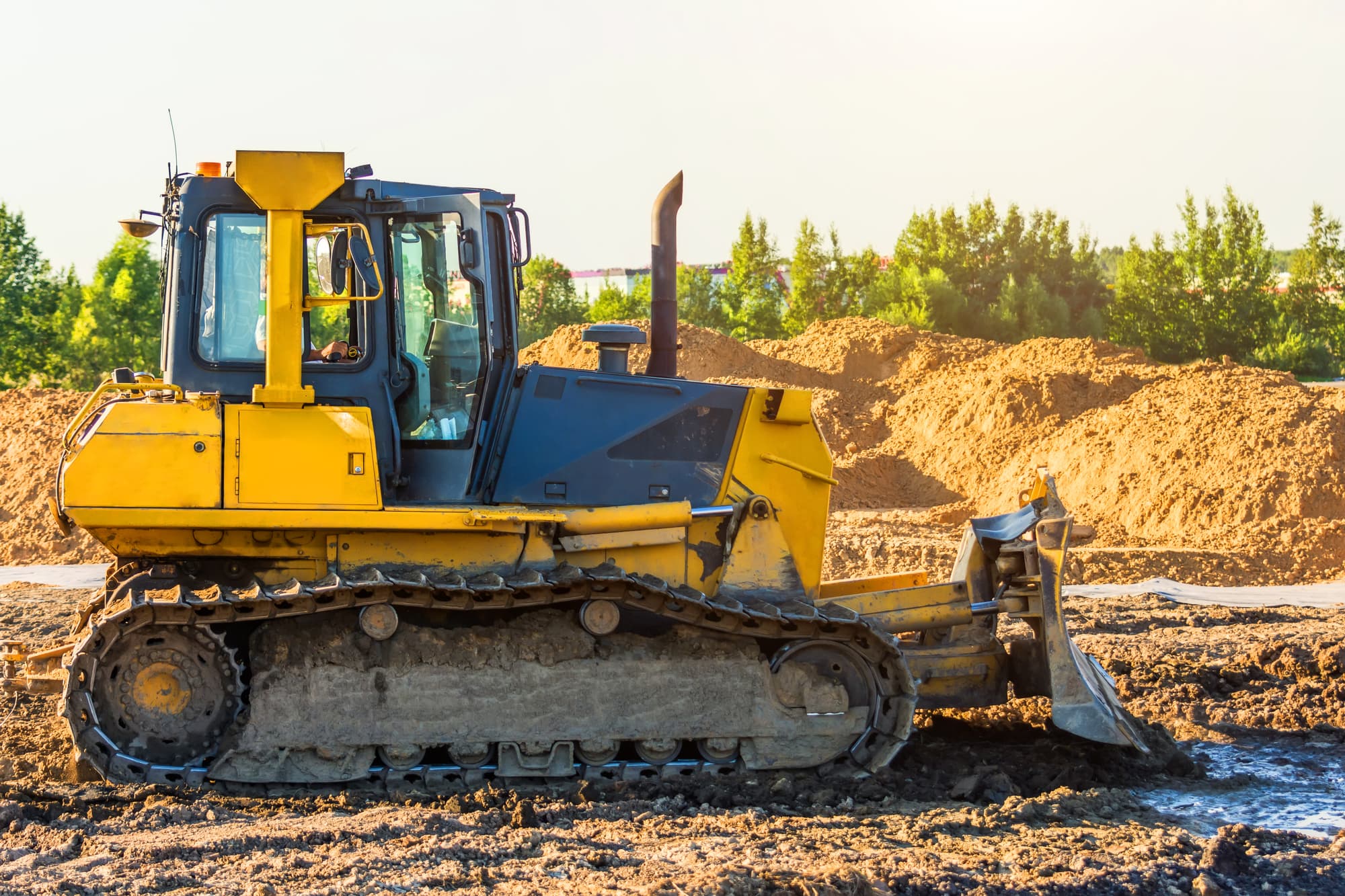Heavy equipment ownership isn't just about the machinery; it's a gateway to entrepreneurship for those looking to carve their niche in a booming industry.
From the cost of acquisition to the nuts and bolts of managing a fleet, heavy equipment ownership requires a strategic blend of financial acumen and market insight.
The following questions will help you explore the multifaceted world of equipment rental businesses, the intricacies of managing operational costs, and how to stay afloat and prosperous in a competitive market.
Join us as we excavate the essentials of making money with heavy equipment ownership.
Understanding the local market dynamics is pivotal for the profitability of an equipment rental business. Factors such as zoning laws, the intensity of construction activities, and demographic density must be analyzed to gauge demand. For instance, densely populated urban areas might have higher demands for compact and versatile equipment due to limited space on construction sites.
Effective expense management is another critical factor for maximizing profits. This includes:
- Prudent spending on the purchase of equipment
- Streamlining maintenance and repair costs
- Efficiently managing storage facilities
- Competitive insurance premiums
- Targeted marketing and understanding of your ideal customer
- Optimal staffing to match demand fluctuations
Being equipped to manage these expenses and their associated data is essential for continued business success.

One aspect of managing your expenses is maintaining a balanced amount of fleet—enough to always meet demand while not becoming burdensome to maintain.
The size of your equipment fleet can considerably affect your revenue potential. A more extensive fleet allows for the simultaneous servicing of multiple clients and accommodates larger or more specialized projects, which can increase rental income.
However, it is vital to balance fleet size with operational efficiency to avoid underutilization and excess overhead.
When considering fleet expansion, several factors need examination:
- It is essential to assess market demand carefully
- Estimate maintenance and repair costs accurately
- Ensure that there are sufficient resources, including financial, to manage the growth sustainably
Ignoring these could lead to overextension and reduce overall business profitability.
Keep an eye on broader economic trends that indicate the health of the construction industry. These will impact the demand for rental equipment. A booming economy generally leads to more building projects, whereas a recession could see a significant downturn in rental requests. Don't be caught unaware!
Time management is paramount for a successful heavy equipment rental company. Efficient scheduling guarantees on-time deliveries and pickups, maximizing equipment utilization and avoiding unnecessary downtime.
- Tracking equipment locations and availability in real-time prevents overbooking and customer dissatisfaction.
- Adhering to maintenance schedules ensures equipment reliability, reducing costly breakdowns and repairs.
- Prompt scheduling of staff for pick-up, delivery, and maintenance ensures projects run smoothly.
Ultimately, effective time management translates directly into greater client satisfaction, positive reputation building, and increased profitability.
Selecting the right heavy equipment for purchase revolves around understanding the specific needs and frequency of usage of your fleet. It's a significant investment that requires consideration of current affordability and the long-term return on investment (ROI).
Sourcing a dependable fleet is fundamental for your heavy equipment rental business. Reliable equipment minimizes downtime, keeps clients happy, and maximizes your return on investment.
Luckily, there are numerous avenues for acquiring top-notch machinery.
- Equipment auctions present opportunities to score good deals, though require a keen eye for condition and potential repair costs
Remember, thorough inspections before any purchase are crucial for ensuring your equipment fleet remains dependable and profitable.
Maintaining a watchful oversight on your assets—understanding when and how each piece of equipment is being used—can lead you to make insightful decisions about what to buy next and maybe what to sell. It's this close-quarters management of the fleet that can have a profound influence on the profitability of a construction equipment business.
Having real-time insight into maintenance needs along with revenue and expense tracking can guide better decision-making.
For example, adjusting rental rates in line with market demand and monitoring expenses for each piece of equipment can optimize profit margins.
Moreover, developing sound pricing strategies during market fluctuations helps in maintaining profitability. Recognizing the importance of depreciation and amortization expenses (the process of spreading out the cost of your equipment purchases over their useful life) can usher in a more effective approach to managing profitability in the heavy construction realm.
As an equipment rental company, you should have a system for tracking where every single piece of equipment is, how much it is being utilized, what maintenance it requires, and where it falls on this schedule.
To achieve optimal profitability from your construction equipment rental fleet, effective utilization strategies are a must. The use of cutting-edge technology for scheduling, utilization tracking, and revenue-expense reporting enhances real-time oversight of vital project variables.
Gone are the days of manual log books and slips that can go missing or forgotten details. Even in the past few years, technology has greatly streamlined accurate usage, location, and maintenance schedules for rented equipment in real-time for rental companies.
Just as an example: a piece of specialized equipment such as a trenching attachment, when properly managed and maintained, brings about substantial long-term savings due to its repeated employment across diverse projects.
But you need to know where it is to help this equipment earn its keep!
On top of this, you also need to know if this trenching attachment is ready to be rented. High utilization rates rely on thorough maintenance and timely repairs. By heading off malfunctions before they result in equipment downtime, your businesses can the cost benefits of advanced fleet management technologies and strategies.
A sound fleet management strategy allows your company to stay on top of machine utilization and maintenance schedules.
Understanding the needs and pain points of your target audience is critical for a heavy equipment rental company. Contractors, landscapers, and DIY enthusiasts all have unique requirements and challenges.
- Perhaps contractors face tight deadlines and need reliable equipment delivered on time.
- Landscapers might need specialized attachments that are hard to find.
- DIYers may need guidance on equipment selection and safe operation.
By tailoring your marketing, inventory choices, and customer service to directly address these pain points, you'll attract a loyal clientele, foster positive word-of-mouth, and stand out from your competition.

Identifying and understanding your intended market region is essential. In the construction equipment industry, understanding local market demands is critical as it influences not only which equipment types are most suitable but also the scale of your operations.
Starting locally and scaling regionally, or even nationally, requires thorough market research and a well-defined targeting strategy.
Furthermore, selectively offering certain machinery types can help you carve out your niche, focusing on specialized markets that larger companies might overlook. This requires a deep comprehension of market dynamics and consumer expectations within the industry and your region.
Conducting regular market research is invaluable for any heavy equipment business. It underpins all strategic decisions and directly influences how the business positions itself for future growth.
Depreciation represents the decline in construction equipment value over time due to age, usage, and wear. Determining depreciation through established methods helps spread this cost equitably across the equipment's lifespan.
Heavy equipment depreciation isn't just about a lower resale price. It's a financial tool. By understanding how much your equipment depreciates each year, you can:
- Secure financing: Banks consider depreciation when deciding loan amounts.
- Reduce taxes: Depreciation expenses lower your taxable income.
- Plan replacements: Anticipate when equipment needs replacing based on depreciation schedules.
Effective depreciation management keeps your finances healthy and your rental company running smoothly.
Tax tactics like straight-line or bonus depreciation can sway the overall financial strain of owning equipment. Therefore, incorporating depreciation into balancing your books is vital when purchasing construction machinery for your rental fleet.
Making sure contractors have high confidence in machine reliability is critical to retaining repeat business in the construction equipment rental market. This not only reduces the likelihood of equipment failure on job sites but also encourages customer loyalty.
Furthermore, contractors frequently look for rental companies that can offer a variety of machines, scheduling flexibility, and the ability to meet diverse equipment needs.

With rental equipment typically experiencing a higher degree of wear and tear, keeping your inventory in peak condition is essential in preserving customer trust.
Heavy equipment rental companies can ensure their fleet remains in good condition by implementing several key practices.
- Firstly, establish a rigorous preventative maintenance schedule that includes regular oil changes, fluid level checks, filter replacements, and thorough inspections for any wear and tear.
- Secondly, offer operator training for customers to promote proper equipment usage and minimize the risk of damage.
- Thirdly, utilize telematics and tracking software to monitor equipment location and usage, allowing for timely maintenance interventions and preventing misuse.
- Finally, invest in high-quality, durable equipment from reputable brands to ensure longevity and reliability.
The construction equipment rental sector is intensely competitive, with a mix of large corporations and small local entities sometimes engaging in price wars and aggressive marketing strategies. These tactics can result in diminished profit margins, encouraging businesses to remain innovative and customer-centric.
Still, staying competitive is essential for a heavy equipment company's survival. This means having an appealing value proposition on top of offering up-to-date, well-maintained equipment at fair rental rates.
Excellent customer service, flexible rental terms, and understanding local market trends will set you apart from the competition. Failing to remain competitive risks losing customers, declining profits, and ultimately, being unable to stay in business.
Economic sensitivity is another characteristic of the construction industry, where slowdowns can lead to reduced revenues and profits.
When it comes to adherence to safety and environmental regulations, compliance is non-negotiable, as failures in these areas can lead to severe legal repercussions and tarnish a company's reputation. It is important to remain nimble enough to comply with current and changing regulatory mandates and not become reliant on practices that could be undone with a change in regulations.
In other words, if you are dependent on questionable practices, don’t be surprised when a small law change potentially folds your company. For the sake of your business, remain compliant!
Geographical factors also play an outsized role in determining the success of construction equipment leasing businesses. Market demand, local construction activities, and competitive landscapes vary significantly with location—each influencing earnings potential.
The interconnectedness with the overall construction sector means that downturns in construction can have immediate effects on the performance and viability of equipment rental businesses.
Keeping an ear to the ground about upcoming construction projects will allow rental companies to steer toward opportunity and around market challenges.
Financial outcomes in the construction equipment rental sector can be quite varied. In the US, average revenues range from approximately $1 million to $3 million for many businesses, with larger companies seeing upwards of $20 million annually. The market generates an impressive sum which can be ballparked at around $15 billion each year—shaped by factors like project demand and market conditions.
Interestingly, smaller equipment businesses usually boast higher gross profit margins—sometimes reaching 70%. Across the board, heavy equipment rental businesses pull in average annual sales of around $8.8 million, and owners can expect an average annual salary in the six figures.
So, who is holding down these numbers? Well, those who have optimized (a.) the utilization of the equipment fleet, (b.) competitive and strategic rental rates, (c.) effective management of operating expenses, and (d.) the exploration of additional revenue streams.
Speaking of which…
Providing extra services is a strategic way of increasing profit margins for equipment rental businesses.
Offering services such as maintenance, delivery, training, the sales of some fleet equipment, and consulting services not only creates additional streams of revenue but can also solidify customer relationships and encourage repeat business.
Offering a diverse service offering that appeals to your target customers also provides more opportunities for them to be introduced to your company and form trust in your brand—keeping your company top of mind for when they need other related services.
Simply put, offering more can help you stand out! How’s that for a value proposition?
Construction projects vary immensely in scope, duration, and the type of work required.
This variation drives the need for flexible rental terms that can accommodate the diverse equipment requirements these projects present.
For rental businesses, establishing rental agreements that are adaptable to short-term needs—such as daily or weekly rentals—and to longer commitments, like monthly or seasonal leases, is critical.
The availability of this range of options ensures that construction companies can acquire the right equipment for the precise duration necessary without overextending financially on unnecessary rental time. This adaptability is fundamental for construction businesses operating in dynamic environments, where project needs can evolve rapidly and unpredictably.
Simply put; if you want to make contractors happy, it pays to be flexible with rental terms.
Launching a heavy equipment rental venture entails a hefty slice of capital for seeding the business. This includes costs connected not only with purchasing machines but also transporting, assembling, and readying them for rental.
Despite the high barrier to entry due to startup and maintenance costs, a rental business in a region with scant competition can find a fast track to success. Evidence of this sector's profitability is the average annual revenue of approximately $8,800,000 reported for U.S.-based heavy equipment rental companies—a testament to the attractive revenue prospects.
Simply put, if you’re looking for business loans, the equipment rental business tends to look good to financiers.
However, understanding the full spectrum of ownership costs—from the initial outlay for purchase and financing, through to maintenance, repairs, and depreciation—is critical for any enterprise weighing the benefits and risks projected in the construction equipment domain.
Diverse financing options can be a lifeline for equipment rental businesses seeking to expand their equipment fleet without sacrificing financial stability.
Seeking out financing providers that understand the heavy equipment industry can unlock additional benefits including tax advantages, no immediate capital requirements, and preserved credit lines.
In addition to specialized equipment financing providers, exploring small business loans or lease arrangements through local banks and credit unions can provide much-needed support, without the strain of significant upfront costs.
Carefully chosen financing routes play a crucial role in maintaining a healthy cash flow.
Owning construction equipment comes with the added responsibility of bearing the full brunt of maintenance costs —which means diligent management to keep machines running optimally.
Regular maintenance is the backbone of heavy equipment performance and longevity. A proactive stance on upkeep—prioritizing comprehensive service schedules and timely repairs—is vital to minimize the risk of machine downtime, which can snowball into costly delays and repairs.
Solid repair protocols, together with a rigorous maintenance schedule both support the health of your fleet. This entails weighing up ongoing expenses—such as spare parts, consumables, service labor hours—against the potential cost savings made from uninterrupted operations.
A disciplined approach towards maintaining equipment not only extends the service life of the machinery but also upholds your financial investment.
You’re not going to keep your equipment forever. Wouldn’t it be nice to recoup the maximum amount when selling it to the next owner?
Offering used heavy equipment sales alongside your rentals can be a lucrative addition to your business. Selling off older or underutilized equipment allows you to recoup some investment from older equipment while appealing to customers who want to own their machinery outright.
To make this side of your business a success, consider some of the following factors:
By running the used equipment sales wing of your business with professionalism and attention to detail to the degree of an acclaimed used equipment dealership, you'll create a valuable revenue stream and expand your customer base.
You Got This!
Starting a successful heavy equipment rental company isn't just about owning the machinery; it requires astute business sense and an understanding of the broader construction industry.
By diligently considering the factors outlined in this article, you'll be well-equipped to make informed decisions that can greatly impact profitability. From market research and financial analysis to equipment management and customer satisfaction—each aspect plays a vital role in building a thriving rental business.
The heavy equipment rental industry offers exciting opportunities for entrepreneurs seeking a lucrative niche. We wish you the best of luck on your journey as you navigate the path to success!
Equipment rental businesses can be quite profitable. Profitability depends on the type of equipment rented, with small equipment (tools, cycles) offering higher margins (60-70%) compared to heavy equipment (40% gross, 15-20% net). Party/event rentals fall in the middle (40-50%). Success depends on local demand for your equipment, competitive pricing, maximizing equipment utilization, and keeping maintenance costs in check. Overall, the equipment rental industry is growing and offers a strong opportunity for profitable businesses.
Excavators are often considered the most profitable piece of construction equipment due to their versatility and high demand. They're used for digging, demolition, and heavy lifting on a wide range of projects. This consistent demand—along with their ability to command good rental rates—contributes to their profitability.
To calculate the ownership cost of equipment, consider these factors:
- Purchase Price: The initial amount you paid for the equipment.
- Depreciation: The decline in value over time (purchase price - salvage value / useful life).
- Maintenance: Regular repair and upkeep costs.
- Taxes & Insurance: Related expenses.
- Interest: Financing costs, if applicable.
Add these costs, then subtract the anticipated resale value to get the total ownership cost.
For additional help, we've created a complete guide: The True Cost of Heavy Equipment: A Comprehensive Breakdown of Associated Costs (+Video).
List Your Rental Equipment With Ease
Once have your construction equipment rental company up and rolling, you will need a place to market your rental listings. Fortunately, your friends from My Little Salesman can help. Since 1958, My Little Salesman has helped connect buyers and renters with the equipment they need to get the job done—and this can include listing your rental equipment.